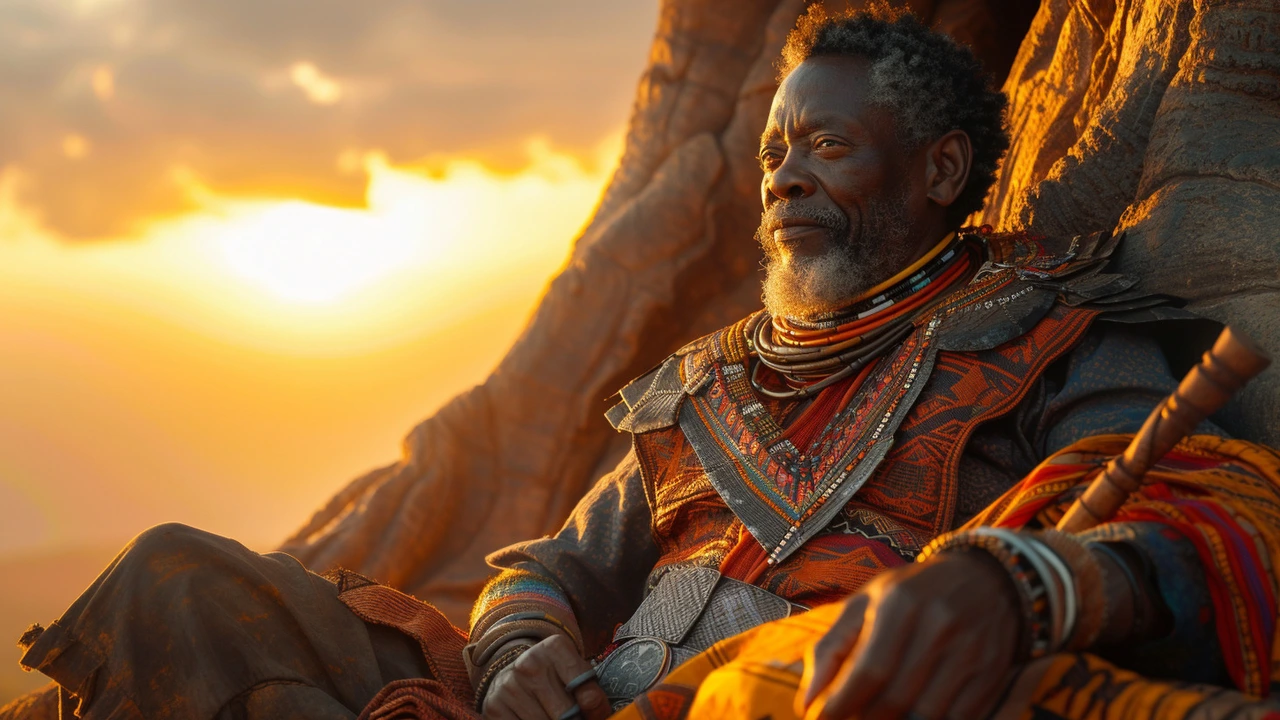Why Rungu is an Essential Part of African Heritage
 Aug, 6 2023
Aug, 6 2023
The Significance of the Rungu in African Heritage
When uncovering the richness of African heritage, one cannot overlook the significance of the Rungu, a symbol deeply ingrained in the heart of many African cultures. Characterised by its sturdy wooden structure with a chunky rounded end, the Rungu is much more than just a mere tool or weapon. It serves as a vessel, ferrying across generations' worth of stories, traditions, and symbolisms, and it remains deeply rooted in the nuances of African heritage.
A pivotal part of many African societies, particularly among the Maasai people of East Africa, the Rungu is synonymous with authority, prestige, and cultural identity. Its fascinating histories, ingrained socio-cultural values, intricate aesthetics, and diverse usages contribute to its intricate fabric and enduring relevance. Divulging into the details, we start to understand why the Rungu is considered a priceless artefact, a mirror reflecting the multifaceted beauty of African heritage.
Unravelling the Rungu's History
Delving into the annals of history, we find that the Rungu's roots are deeply intertwined with the various African societies that have cherished it over centuries. Although commonly associated with the Maasai communities, it is, in fact, a ubiquitous symbol across numerous ethnic groups and populations within Africa. Its origins are as diverse and complex as the continent itself, with each society imprinting its unique interpretation and usage onto the Rungu.
Historically, a Rungu was not just a mere possession that individuals could simply lay hands on. Rather, it's acquisition was intertwined with rites of passage, transitions of power, and socio-cultural ceremonies. The giving of a Rungu often marked a milestone, signifying the person's growth into their new societal role or status. It's a piece of history that has been handed down from generation to generation, much like a baton in a relay race of culture and tradition.
Symbolism and Utility of the Rungu
The appeal of the Rungu lies in the mystery of its myriad symbolisms and utilities. On the surface, it's an innocuous wooden object, but hidden within its crests and troughs are layers of meanings and symbolisms that reveal its true essence. The Rungu, in many respects, is representative of the complex and intricate African ideologies, hierarchical structures, and socio-cultural dynamics.
Beyond its symbolic value, the Rungu has practical applications that reflect the adaptability and resourcefulness of the African people. Besides being a symbol of power and prestige, it functioned as a handy tool for various tasks, ranging from hunting and herding to self-defence. This dual nature –decorative symbolism and utilitarian usefulness– gives the Rungu an enduring relevance in African societies.
The Rungu in Contemporary Times
Even as the world races towards an unending spiral of modernisation, the Rungu has retained its place in the socio-cultural landscape of African society. It continues to be a tangible representation of African history, culture, and tradition, resonating with timeless tales of African sagacity, resilience, and communal harmony.
Contemporary uses of the Rungu are as diverse as they are profound. In the hands of tribal leaders, it still wields traditional authority and respect. In local markets, it is sold as a piece of heritage, capturing the imaginations of tourists and locals alike. For some, it is a fashion accessory, a piece of decorative art, and even a fitness apparatus. The Rungu's seamless transition from its traditional role to modern applications underscores its symbolism as a bridge connecting Africa's illustrious past and its dynamic present.
Speaking of connections, the Rungu has a peculiar way of creating bonds too. Years ago, during one of my African adventures, I found myself mesmerised by a local game involving the Rungu. In a friendly yet spirited competition under the African sky, young men demonstrated their strength and precision by throwing their Rungus. The shared laughter and camaraderie encapsulated in those moments gave me a new respect for this seemingly simple tool. It proved to me how the Rungu subtly facilitates connections and community spirit, threading together disparate individuals into a closely-knit fabric of unity. The experience reminded me that objects like the Rungu carry within themselves a strand of the human spirit, telling tales of unity, strength, and resilience.
At the end of this deep dive into the significance of the Rungu, I find myself filled with a sense of awe and respect for this simple yet powerful element of African heritage. The Rungu, in its simplicity, reveals the complexity of African cultures. It continues to captivate us with its multifunctionality, historical richness, and cultural depth. It remains as an enduring symbol of Africa's rich heritage, embodying the continent's past, mirroring its present, and reaching out into the future. The Rungu, thus, is not just an essential part of African heritage, it is indeed an essential part of humanity's shared cultural fabric.